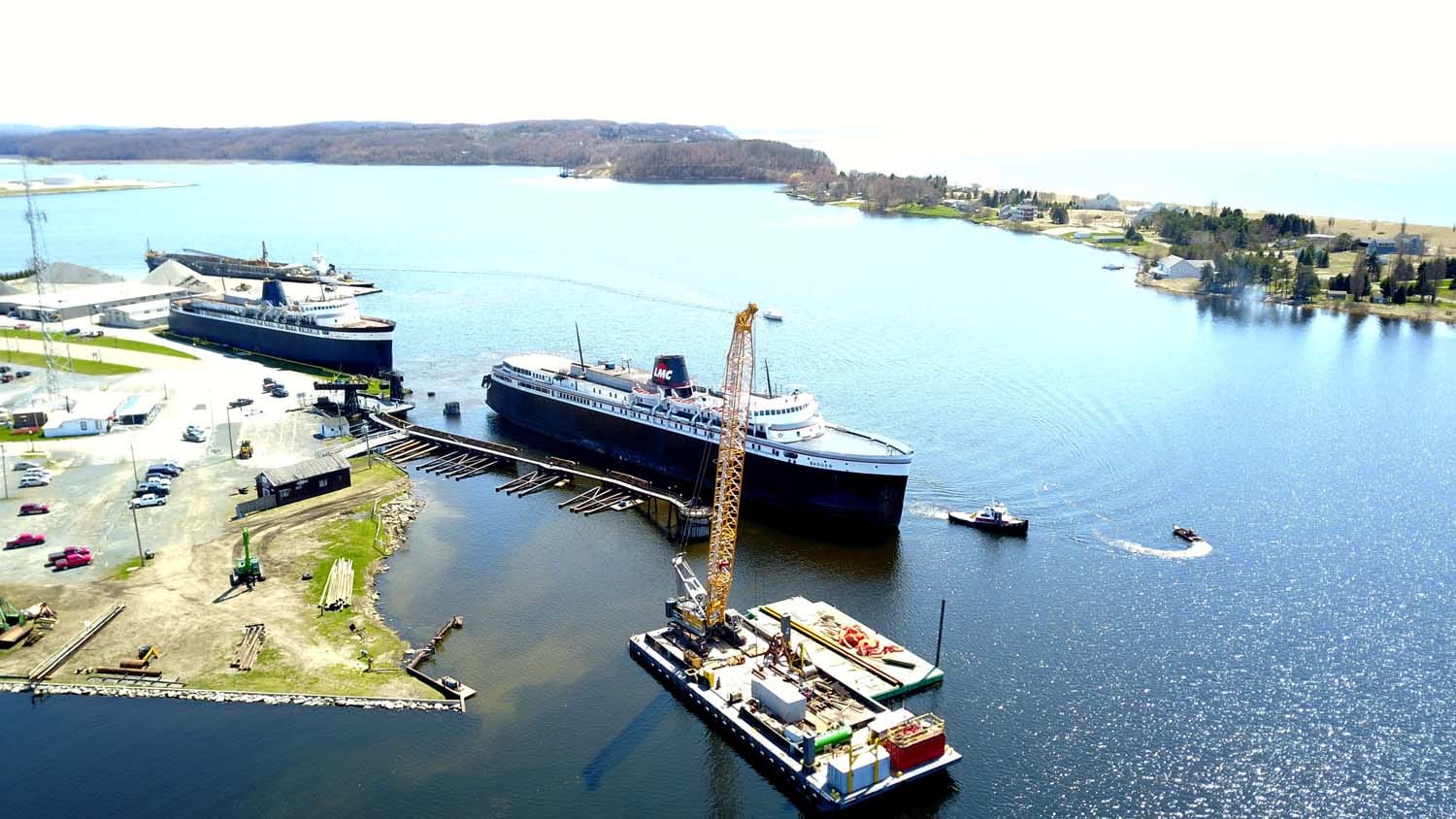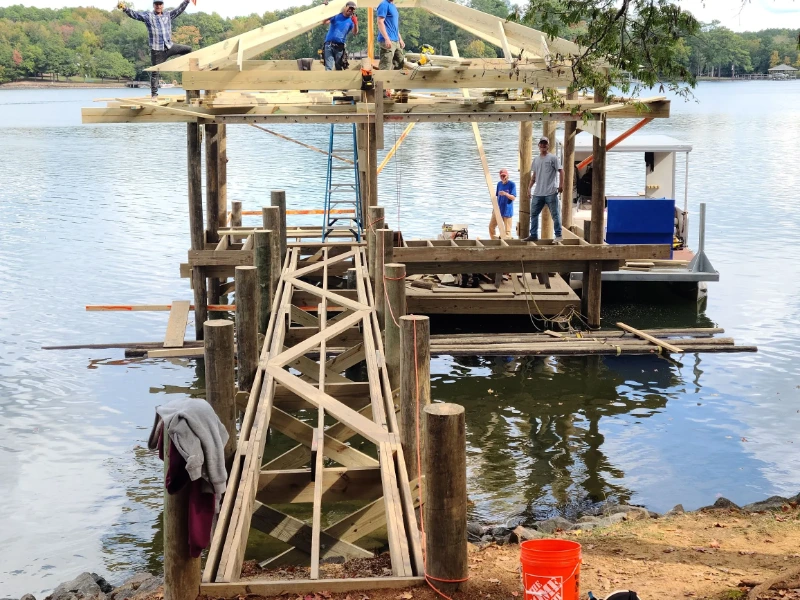How to Address Common Dock Repair Issues for Safe Water Tasks

Identifying Common Dock Issues
Recognizing common dock concerns is essential for keeping the capability and security of your beachfront home. Routine inspections can help reveal problems prior to they become serious, making sure both the longevity of the dock and the security of those that use it.
Another typical trouble is the destruction of flotation protection tools. These devices are crucial for maintaining the dock resilient, and any damages or leaks can cause the dock to listing or sink. Consistently looking for leaks or waterlogged drifts can preempt more substantial problems.
Additionally, algae and barnacle build-up on the dock's surface area can develop slippery and unsafe conditions. This biofouling not only presents a risk to users however can also accelerate the damage of the dock products.
Lastly, inspecting for indications of rust on steel components is important. Rust can jeopardize the stability of the dock's framework, making it harmful. By regularly determining these usual dock issues, you can ensure that your dock stays useful and protected for several years ahead.
Repairing Rotting Wood
When resolving the issue of decomposing wood on your dock, it is imperative to act quickly to stop more degeneration. Begin by completely examining the whole framework to determine all affected locations. Use a screwdriver to penetrate the wood; if it sinks in easily, the timber is likely deteriorated and needs immediate interest.
When recognized, remove the deteriorated sections utilizing a saw or chisel. Be sure to reduce back to healthy and balanced, strong timber, ensuring you get rid of all endangered product. After elimination, treat the continuing to be wood with a timber chemical to avoid future rot. This therapy will certainly help protect against wetness, which is the key reason for wood decay.
Next, replace the removed sections with marine-grade lumber or pressure-treated wood, which are a lot more immune to water damage. Protect the brand-new items with stainless-steel or galvanized fasteners to stop deterioration. Furthermore, applying a water resistant sealer to the new timber can offer an added layer of defense.
Protecting Loosened Boards
How do you guarantee your dock remains risk-free and practical for all its individuals? One important element is securing loosened boards, which can or else pose significant dangers. Loose boards not only increase the risk of stumbling however can also endanger the structural honesty of the whole dock.

For reinstallation, utilize galvanized or stainless steel screws, as these products use remarkable resistance to rust in marine settings. Guarantee the screws are long enough to pass through deep right into the underlying support structure, however not as long that they extend via the dock's surface area. Pre-drilling pilot holes can assist avoid the wood from splitting.
Finally, maintain a normal evaluation schedule to determine and address any type of new issues without delay. By protecting loose boards successfully, you add to the overall security and durability of your dock, making it a trustworthy system for water tasks.
Stabilizing Unsteady Pilings
Making sure the security of unstable pilings is vital to maintaining a secure and functional dock. Unstable pilings can jeopardize the whole structure, posing considerable risks to individuals and possibly bring about costly fixings. The initial step in supporting these vital components is a complete inspection. Examine the pilings for signs of rot, damages, or moving. Utilize a level to look for upright positioning and guarantee they are driven deep enough into the substrate to provide ample assistance.
If the pilings are discovered to be right here unpredictable, one effective technique for support is the usage of added supporting. Cross-bracing with dealt with lumber or galvanized metal can substantially enhance stability. Support the braces safely to both the pilings and the dock frame to distribute lots equally.

Normal maintenance and regular reassessment of the pilings' stability are critical to ensuring lasting dock security and capability.
Replacing Rusty Hardware
Resolving unstable pilings is simply one aspect of preserving a dock's stability; one more crucial issue is replacing rusty hardware. Gradually, exposure to dampness and salt can bring about the oxidation and corrosion of brackets, screws, and screws, compromising the entire structure's safety and security. Routine assessment for rust is important, specifically after severe weather condition or seasonal modifications.
When rustic equipment is recognized, prompt action is needed. Begin by selecting marine-grade stainless steel or galvanized hardware, both designed to stand up to the rough marine environment. Make sure that you have the appropriate devices, such as screwdrivers and wrenches, to securely get rid of the old, rusty pieces without triggering further damage to the dock.
After removing the corroded equipment, thoroughly clean the impacted locations to eliminate any type of residual rust or particles. Use a rust-inhibiting guide to exposed metal surfaces before setting up the brand-new equipment. Tighten all fixtures firmly to stop future helping to loosen, and regularly examine the fittings to ensure ongoing security.
Changing rusty hardware not only prolongs the dock's life expectancy however also considerably improves the safety of water activities. By proactively managing deterioration, you protect both the structure and its customers, making sure a secure and enjoyable beachfront experience.
Final Thought
Routine inspections and maintenance are vital to attend to usual dock fixing concerns and ensure safe water activities. By recognizing and fixing issues such as rotting timber, loosened boards, unstable pilings, and corroded hardware, architectural security and longevity can be substantially improved. The application of suitable treatments and marine-grade materials additionally fortifies the dock versus environmental stressors. Such proactive actions add to the general safety hop over to these guys and functionality of dock frameworks, promoting a safe environment for water-based activities.
Making sure the safety of water activities hinges significantly on the correct maintenance and repair of docks (Dock Repairs). These tools are essential for keeping the dock buoyant, and any kind of damage or leaks can create the dock to checklist or sink. By regularly recognizing these typical dock issues, you can guarantee that your dock stays useful and safe and secure for years to come
Making certain the security of unstable pilings is critical to preserving a safe and useful dock.Routine inspections and maintenance are vital to address common dock repair work issues and make certain secure water tasks.